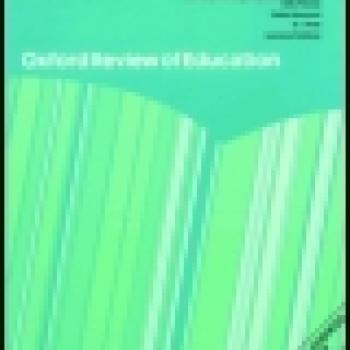
Editorial from special issue of Oxford Review of Education 40(1): 1-9
In 2000 the Millennium Declaration issued by the United Nations identified poverty reduction as a main development goal for the 21st century. More specific goals were set by the international community in 2002, including the achievement of universal primary education by 2015. It was in this context that the Young Lives study was established in 2001.Young Lives? offers a unique longitudinal dataset of linked household and school information stretching from infancy to young adulthood. This special issue employs this evidence to examine how poverty, access to education and school quality combine over the life-course of the child to shape educational experience, outcomes and life-chances, with special reference to the methodological advantages afforded by a dual cohort longitudinal approach across four countries.
Since the Millennium, Ethiopia, India, Peru and Vietnam have experienced rapid economic growth, while the benefits of growth have been shared somewhat unequally. Childhood poverty on absolute measures has declined in each country during the life of the study, and educational access has improved, in some of the study sites dramatically. Nonetheless, trends in inequality are more ambiguous, varying across the study sites and countries. These draw attention to key differences in both the environments and policies which shape the "gaps" between more advantaged and less advantaged groups, including those relating to the nature of educational access and quality across contexts and over time. Moreover, equitable opportunities for education of good quality are likely to appear among a revised set of Millennium Development Goals post 2015, not least because a majority of children are now enrolled in school in all but a handful of countries, and attention is shifting to levels of and inequalities in learning outcomes and school quality.
In principle, improvements in educational access provide for the acquisition of the skills that enable individuals, households, communities and countries to adapt to a fast changing world. Rising enrolment levels have not, however, necessarily been accompanied by improvements in the quality of schooling and level of learning outcomes. The papers in this issue show how educational experience, achievement and progression through the grades of schooling are shaped by both school and home factors. Quality schooling for the least advantaged can serve to mitigate the longer-term effects of early-life disadvantage and to develop the key cognitive and non-cognitive skills which prepare young adults for productive livelihoods and future well-being. While schools and pre-schools appear to reinforce or perpetuate gaps between more and less disadvantaged groups in some cases, they can also mitigate inequalities. Much depends on the relationship between home backgrounds and school quality and the relative importance of school effects on learning and skills development, when compared to home background effects.
The final published version of the article is available on the journal website.

Editorial from special issue of Oxford Review of Education 40(1): 1-9
In 2000 the Millennium Declaration issued by the United Nations identified poverty reduction as a main development goal for the 21st century. More specific goals were set by the international community in 2002, including the achievement of universal primary education by 2015. It was in this context that the Young Lives study was established in 2001.Young Lives? offers a unique longitudinal dataset of linked household and school information stretching from infancy to young adulthood. This special issue employs this evidence to examine how poverty, access to education and school quality combine over the life-course of the child to shape educational experience, outcomes and life-chances, with special reference to the methodological advantages afforded by a dual cohort longitudinal approach across four countries.
Since the Millennium, Ethiopia, India, Peru and Vietnam have experienced rapid economic growth, while the benefits of growth have been shared somewhat unequally. Childhood poverty on absolute measures has declined in each country during the life of the study, and educational access has improved, in some of the study sites dramatically. Nonetheless, trends in inequality are more ambiguous, varying across the study sites and countries. These draw attention to key differences in both the environments and policies which shape the "gaps" between more advantaged and less advantaged groups, including those relating to the nature of educational access and quality across contexts and over time. Moreover, equitable opportunities for education of good quality are likely to appear among a revised set of Millennium Development Goals post 2015, not least because a majority of children are now enrolled in school in all but a handful of countries, and attention is shifting to levels of and inequalities in learning outcomes and school quality.
In principle, improvements in educational access provide for the acquisition of the skills that enable individuals, households, communities and countries to adapt to a fast changing world. Rising enrolment levels have not, however, necessarily been accompanied by improvements in the quality of schooling and level of learning outcomes. The papers in this issue show how educational experience, achievement and progression through the grades of schooling are shaped by both school and home factors. Quality schooling for the least advantaged can serve to mitigate the longer-term effects of early-life disadvantage and to develop the key cognitive and non-cognitive skills which prepare young adults for productive livelihoods and future well-being. While schools and pre-schools appear to reinforce or perpetuate gaps between more and less disadvantaged groups in some cases, they can also mitigate inequalities. Much depends on the relationship between home backgrounds and school quality and the relative importance of school effects on learning and skills development, when compared to home background effects.
The final published version of the article is available on the journal website.

